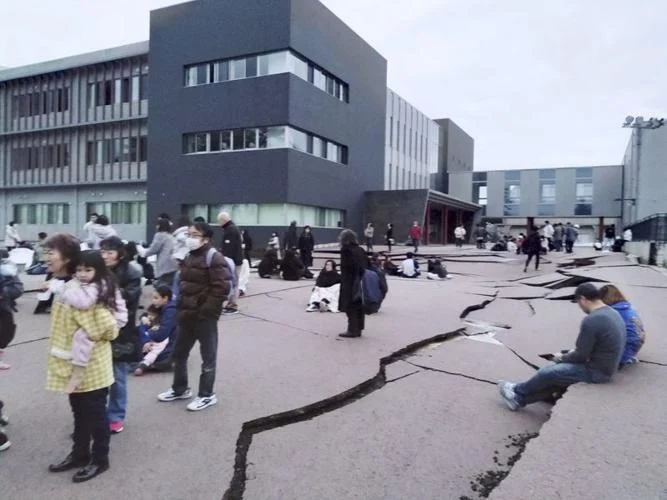Japanese rescuers scrambled to search for survivors Wednesday as authorities warned of landslides from heavy rain after a powerful earthquake that killed at least 62 people.
The 7.5-magnitude quake on January 1 that rattled Ishikawa prefecture on the main island of Honshu triggered tsunami waves more than a metre high, sparked a major fire and tore apart roads.
The Noto Peninsula on the Sea of Japan coast was most severely hit, with buildings ravaged by fire and houses flattened in several towns, including Wajima and Suzu, as shown by before-and-after satellite images.
The regional government announced Wednesday that 62 people had been confirmed dead and more than 300 injured, 20 of them seriously.
The toll was expected to climb as rescuers battle aftershocks and poor weather to comb through rubble.
More than 31,800 people were in shelters, and at least 200 buildings had collapsed, with the number expected to rise, the government said.
“More than 40 hours have passed since the disaster. We have received a lot of information about people in need of rescue and there are people waiting for help,” Prime Minister Fumio Kishida said Wednesday after an emergency task force meeting.
The number of military personnel sent to the area on rescue missions has been doubled, with more rescue dogs also deployed, he added.
The operation was given extra urgency as the Japan Meteorological Agency (JMA) issued a heavy rain warning in the region, advising people to be on alert for landslides until Wednesday evening.
There were “almost no houses standing” in one town in the Suzu area, said municipal mayor Masuhiro Izumiya.
“About 90 per cent of the houses (in that town) are completely or almost completely destroyed… the situation is really catastrophic,” he said, according to broadcaster TBS.
Around 32,800 households were still without power in Ishikawa prefecture, the local utility said. Many cities were without running water.
Plenty of food and emergency supplies have arrived in the region, but blocked or damaged roads have slowed their delivery to communities, regional authorities said.
Yuko Okuda, 30, was taking shelter at an evacuation centre at the municipal office of the town of Anamizu, down the coast from Suzu.
“I’m here because our lifelines have been cut off. Electricity, water and gas – everything. And as aftershocks keep happening, our house could collapse at any time,” she told AFP.
“The cold and the lack of food are my biggest concerns now,” she said, explaining that her son is allergic to eggs and so could not eat the food provided.
Trains, highways reopened
Shinkansen bullet trains and highways have resumed operations after several thousand people were stranded b- some for almost 24 hours.
The US Geological Survey said the quake had a magnitude of 7.5, while the JMA measured it at 7.6, triggering a major tsunami warning.
The powerful quake was one of more than 400 to shake the region through Wednesday morning, the JMA said.
After the main jolt, waves at least 1.2 metres (four feet) high hit Wajima and a series of smaller tsunamis were reported elsewhere.
Japan experiences hundreds of earthquakes every year and the vast majority cause no damage, with strict building codes in place for more than four decades.
Earthquakes have hit the Noto region with intensifying strength and frequency over the past five years.
The high number of aftershocks is a result of the “complex” fault systems below the peninsula, Yoshihiro Ito from Kyoto University’s Disaster Prevention Research Institute told AFP.
The country is haunted by a massive 9.0-magnitude undersea quake off northeastern Japan in 2011, which triggered a tsunami that left around 18,500 people dead or missing.
It also swamped the Fukushima atomic plant, causing one of the world’s worst nuclear disasters.

 Join Daily Trust WhatsApp Community For Quick Access To News and Happenings Around You.
Join Daily Trust WhatsApp Community For Quick Access To News and Happenings Around You.


